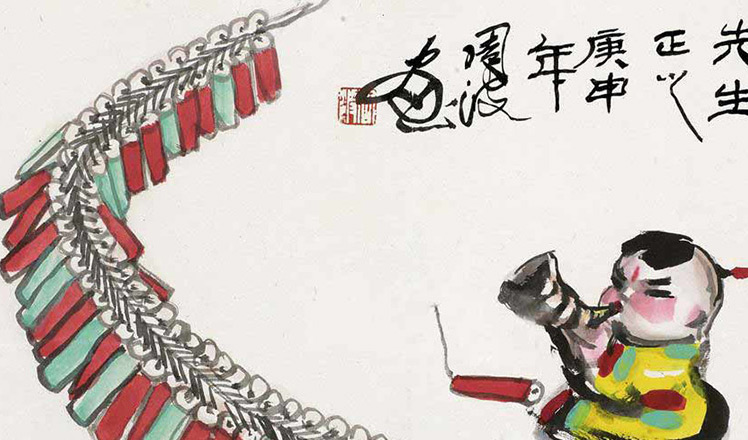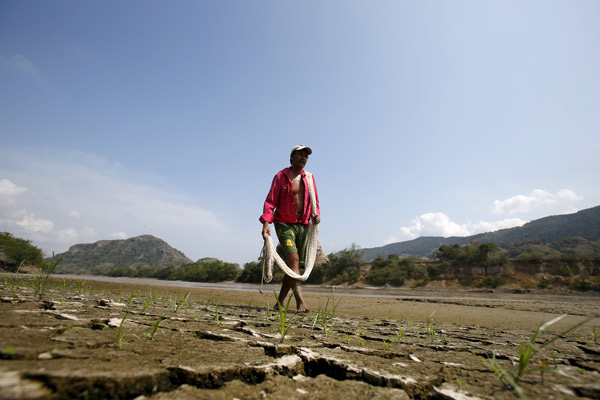El Nino expected to wreak havoc in S. America well into 2016
Updated: 2016-01-26 15:40
(Xinhua)
|
||||||||
MEXICO CITY - After displacing over 100,000 South Americans with severe floods in 2015, the El Nino weather phenomenon is expected to wreak more havoc in the region well into 2016.
The global phenomenon -- triggered by unusually warm ocean surface temperatures in the central Pacific that disrupt weather patterns -- robbed rain from southeast Asia as it inundated parts of Latin America late last year.
In a Dec. 29 report, Josh Willis, a project scientist at NASA's Jet Propulsion Laboratory (JPL), said satellite images potentially showed "we have not yet seen the peak of this El Nino," mainly because the amount of extra-warm surface water has continued to increase.
Some two weeks later, on Jan 13, Colombia's meteorological institute (IDEAM) labeled the 2015/2016 El Nino as "the second strongest on record," adding it "continues in its stage of greatest intensity."
Extreme weather in parts of Latin America shows El Nino remains active.
Colombian environmental authorities in mid-January issued a red alert in several departments (states) affected by excessively high temperatures and drought during the Southern Hemisphere's summer season due to El Nino.
One of the departments worst hit so far is Huila, where 4,000 heads of cattle have perished from drought, which local officials are trying to fight by building deep wells and water reservoirs.
Other departments, such as Boyaca, are struggling with water shortages and forest fires. In the first two weeks of 2016 alone, 45 forest fires razed up to 116 hectares of woods.
Colombia's Environment Minister Gabriel Vallejo warned that temperatures in Tolima, where a health emergency was declared, are four degrees Celsius higher than the average for this time of year.
Other parts of the country, meanwhile, have seen crops ruined due to cold snaps.
Farmer Leandro Silva, a resident of Subachoque, in the department of Cundinamarca, told Xinhua what the local situation was by phone. "Here our crops have been damaged. The potatoes ruined, the grass ruined due to frost and the summer's not over.... I don't know what the weather will bring if this summer continues."
Silva said he couldn't recall living through a similar crisis due to weather.
"The water levels, the aqueducts are already being rationed ... the banks need to help the growers, because they are charging more interest," said Silva.
- A glimpse of Spring Rush: little migrant birds on the way home
- Policy puts focus on genuine artistic students
- Police unravel market where babies are bought, sold as commodities
- More older pregnant women expected
- Netizen backlash 'ugly' Spring Festival Gala mascot
- China builds Mongolian language corpus
- Special envoy to visit Laos and Vietnam
- El Nino expected to wreak havoc in S. America well into 2016
- Police officer rescues frightened sloth at corner of busy highway
- US Secretary of State visits Laos, aiming to boost ties
- 2 Chinese nationals killed, 1 injured in suspected bomb attack in Laos
- New York, Washington clean up after fatal blizzard

 Creation of China Daily's Tibetan-style font
Creation of China Daily's Tibetan-style font
 Drone makers see soaring growth but dark clouds circle industry
Drone makers see soaring growth but dark clouds circle industry China's Zhang reaches Australian Open quarterfinals
China's Zhang reaches Australian Open quarterfinals
 Spring Festival in the eyes of Chinese painters
Spring Festival in the eyes of Chinese painters
 Cold snap brings joy and beauty to south China
Cold snap brings joy and beauty to south China
 First trains of Spring Festival travel depart around China
First trains of Spring Festival travel depart around China
 Dough figurines of Monkey King welcome the New Year
Dough figurines of Monkey King welcome the New Year
 Ning Zetao, Liu Hong named China's athletes of the year
Ning Zetao, Liu Hong named China's athletes of the year
Most Viewed
Editor's Picks

|

|

|

|

|

|
Today's Top News
National Art Museum showing 400 puppets in new exhibition
Finest Chinese porcelains expected to fetch over $28 million
Monkey portraits by Chinese ink painting masters
Beijing's movie fans in for new experience
Obama to deliver final State of the Union speech
Shooting rampage at US social services agency leaves 14 dead
Chinese bargain hunters are changing the retail game
Chinese president arrives in Turkey for G20 summit
US Weekly

|

|








